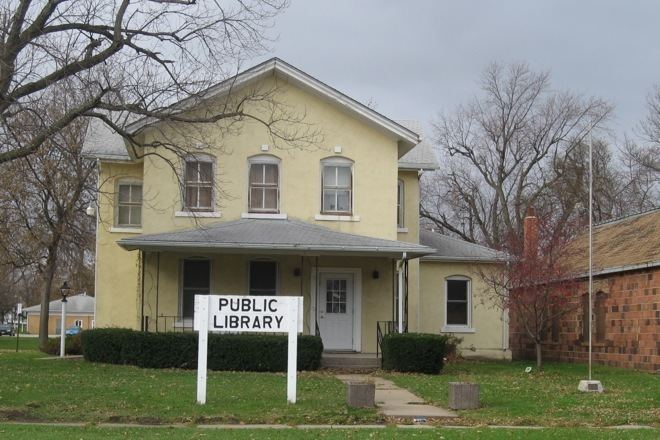Country United States FIPS code 19-76935 Elevation 382 m Zip code 51653 Local time Friday 5:35 PM | Time zone Central (CST) (UTC-6) GNIS feature ID 0462169 Area 3.34 km² Population 986 (2013) Area code 712 | |
 | ||
Weather 8°C, Wind N at 21 km/h, 92% Humidity | ||
Tabor is a city in Fremont County and extends northward into Mills County in the U.S. state of Iowa. The population was 1,040 at the 2010 census.
Contents
- Map of Tabor IA 51653 USA
- Geography
- History
- 2010 census
- 2000 census
- National Historic Places and attractions
- References
Map of Tabor, IA 51653, USA
Geography
Tabor is located at 40°53′48″N 95°40′21″W (40.896605, -95.672368).
According to the United States Census Bureau, the city has a total area of 1.29 square miles (3.34 km2), all of it land.
History
In 1852 the city of Tabor was founded by several Christian clergymen, who were also active abolitionists, (George Gaston, Samuel A. Adams, and Rev. John Todd) and their families. They chose to settle in what is now Tabor in order to found a Christian college, which eventually became Tabor College. The founders "were impressed with this high location and mutually selected the name "Tabor" after the Biblical name of Mount Tabor, a mountain near Nazareth, the town of Jesus' childhood." In the 1850s the abolitionist John Brown kept a store of weapons in Tabor, and met here with other supporters to plan his raids in Kansas and Virginia, including the Raid on Harpers Ferry. The town was the home of many abolitionists, including John Todd, a 'conductor' on the Underground Railroad and co-founder of Tabor College. Tabor College was located in the city from 1853 to 1927 before it closed its doors for financial reasons. The college's buildings housed German P.O.W.s during World War II. The only building remaining from the college has now been subdivided into apartments.
2010 census
As of the census of 2010, there were 1,040 people, 418 households, and 272 families residing in the city. The population density was 806.2 inhabitants per square mile (311.3/km2). There were 451 housing units at an average density of 349.6 per square mile (135.0/km2). The racial makeup of the city was 98.5% White, 0.7% African American, 0.3% Asian, 0.1% from other races, and 0.5% from two or more races. Hispanic or Latino of any race were 2.0% of the population.
There were 418 households out of which 29.9% had children under the age of 18 living with them, 50.2% were married couples living together, 10.0% had a female householder with no husband present, 4.8% had a male householder with no wife present, and 34.9% were non-families. 31.6% of all households were made up of individuals and 15% had someone living alone who was 65 years of age or older. The average household size was 2.34 and the average family size was 2.95.
The median age in the city was 44.3 years. 23.2% of residents were under the age of 18; 6.2% were between the ages of 18 and 24; 21.3% were from 25 to 44; 27.1% were from 45 to 64; and 22.2% were 65 years of age or older. The gender makeup of the city was 48.3% male and 51.7% female.
2000 census
At the 2000 census, there were 993 people, 387 households, and 267 families residing in the city. The population density was 777.4 people per square mile (299.5/km²). There were 416 housing units at an average density of 325.7 per square mile (125.5/km²). The racial makeup of the city was 99.60% White, 0.10% Asian, and 0.30% from two or more races. 0.81% of the population was Hispanic or Latino of any race.
There were 387 households of which 30.5% had children under the age of 18 living with them, 55.6% were married couples living together, 11.6% had a female householder with no husband present, and 31.0% were non-families. 28.7% of all households were made up of individuals and 20.2% have someone living alone who is 65 or older. The average household size was 2.38 and the average family size was 2.91.
24.1% of the population were under the age of 18, 5.2% from 18 to 24, 22.6% from 25 to 44, 23.0% from 45 to 64, and 25.2% who were 65 years of age or older. The median age was 44 years. For every 100 females there were 84.6 males. For every 100 females age 18 and over, there were 74.1 males.
The median household income was $36,750 and the median family income was $50,000. Males had a median income of $31,042 compared with $23,068 for females. The per capita income for the city was $16,979. About 3.7% of families and 7.9% of the population were below the poverty line, including 11.5% of those under age 18 and 9.0% of those age 65 or over.
